The gyre then becomes the North Atlantic Current which flows across the North Atlantic to Europe. Moving in large circular systems warm waters flow away from the equator toward the poles and cold water flows back toward the equator.

Ppt Chapter 1 Sections 3 4 Review Powerpoint Presentation Free Download Id 2325529
As the cold air moves it pushes the warm less dense air out of the way.
. Areas where cold air sinks toward the surface are areas of high pressure. The sun heats the land more quickly than the water. Gyres flow clockwise in Northern Hemisphere oceans and counterclockwise in Southern.
A coastal region for instance undergoes changes in wind direction daily. Air masses are thousands of feet thick and extend across large areas of the Earth. Warm air that rises up mountain slopes during the day is called.
The greater the pressure difference is the faster the air moves and the. Many daily weather patterns depend on wind. For example air over the tropical ocean becomes exceptionally hot and humid.
Air from the surrounding area is sucked into the space left by the rising air. Its also affected by the spin of the Earth. Warm air above the land rises and cooler air above the.
Winds blowing over the ocean currents affect the climate of the lands that the winds cross. The Coriolis effect causes winds and currents to form circular patterns. The vicinity of the leading edge is called the laminar flow area where air flows parallel to the flat surface.
Ocean currents are like rivers flowing in the ocean. Subsequently the air flows to the rear through the transition region called a turbulent flow region but the layer in contact with the flat plate surface is in the laminar flow state with a remarkably low flow rate. The water at the ocean surface is moved primarily by winds that blow in certain patterns because of the Earths spin and the Coriolis Effect.
Some of the examples of convection current may include boiling water convection currents in the atmosphere and in the ocean weather changes campfires etc. Air moves in large circular patterns called convection cells. This pattern called atmospheric circulation is caused because the Sun heats the Earth more at the equator than at the poles.
It has long been recognised that the control of air flow is a crucial and intrinsic part of heat and moisture control in modern building enclosures Wilson 1963 Garden 1965. Colder denser air from a high-pressure area will flow toward a low-pressure area. SINKING air causes HIGH PRESSure because.
Winds are able to move the top 400 meters of the ocean creating surface ocean currents. The air cools until it descends. That this statement is true for all climates has been a more recently developed awareness Lstiburek 1994A large fraction of a modern well-insulated buildings space conditioning.
Water vapor carbon dioxide and other gases absorb and reradiate thermal energy. This movement of air is called wind. Horizontal flow is called advection.
Air flowing from areas of high pressure to low pressure creates winds. The Gulf Stream is the western boundary current of the gyre. Surface heating and lifting air along a sea breeze form.
Air travels in large CIRCULAR patterns called. The movement of air caused by differences in air pressures is called solar energy Air is warmer and less dense than surrounding air at the equator because the equator receives more. Produces large summertime rainfall Fig.
Rising warm air and sinking cool air for a circular wind pattern called a convection cell Convection cells form because of unequal ------- and -------- of the air heating and cooling Land warms up ------- than water faster On a warm day the air above the land ------- and a cool ------ blows toward the land rises and sea breeze. Surface ocean currents form large circular patterns called gyres. The greater the difference the faster the wind.
The location over which an air mass forms will determine its characteristics. A convection cell is most notable in the formation of clouds with its release and transportation of energy. Bands of high pressure and low pressure founf every 30degrees of latitude.
Convection currents are defined as the vertical movement of heat or moisture energy from one location to another primarily due to the temperature changes within the substance. However it is not this simple. Where it reaches the ground it creates a high pressure zone.
At the poles the cooler air sinks and moves back toward the equator. Cool air that moves down mountain slopes during the night is called. Convection cells are seperated by.
What are the large circular patterns air travels in called. Air masses These global wind patterns drive large bodies of air called air masses. Air flows horizontally at top of the troposphere.
You will end up with a single-cell pattern called the Hadley Cell warm air rises at the equator cold air sinks at the poles. The direction that they spin depends on the hemisphere that they are in. When a difference between atmospheric pressure exits air moves from higher to lower pressure area resulting in winds of various speeds.
Warm air rises at the equator and moves toward the poles. Some air moves back to equator from the NE trade winds ITCZ. Air moves from a high-pressured environment to a low-pressured environment.
Wind is caused by differences in atmospheric pressure due to uneven heating of the Earth. Coriolis effect is demonstrated using a metal ball and a rotating plate in this video. Circular movement of warm air rising and cool air sinking.
In the tropics near the equator warm air rises. Still flowing in a circular pattern the current flows south as far as the northwestern coast of Africa where it is known as the Canary Currentthe gyres eastern boundary current. Transfer of energy by circulation or movement of a gas.
In area near the equator the sun is almost directly overhead for most of the year. Unequal heating of the Earths surface also forms large global wind patterns. When it gets about 10-15 km 6-9 miles above the Earth surface it starts to flow away from the equator and towards the poles.
Transfer of energy as electromagnetic waves. Cool air that flows over the land toward the ocean during the night is called.
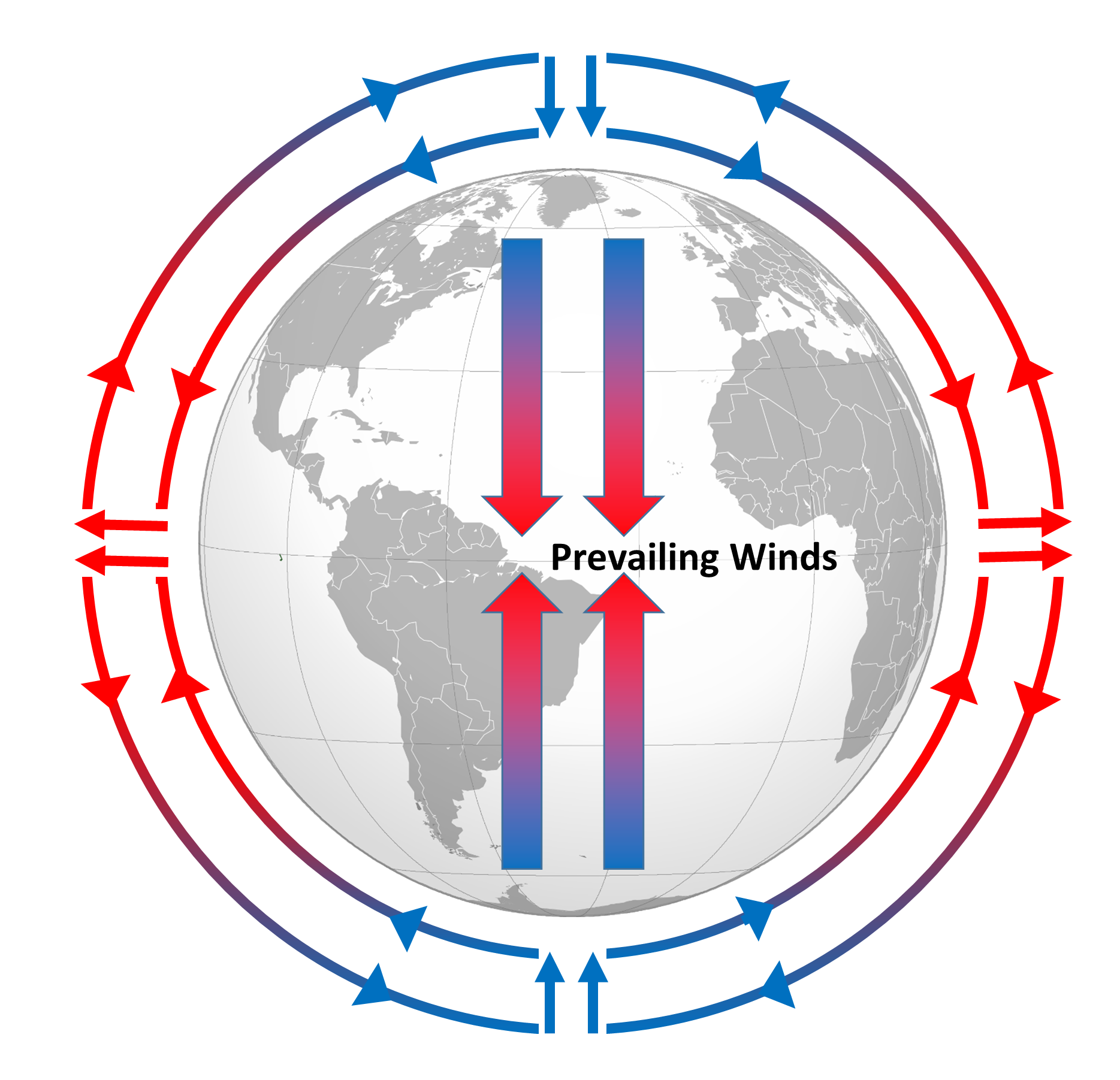
8 2 Winds And The Coriolis Effect Introduction To Oceanography
Climate Science Investigations South Florida Global Wind Patterns
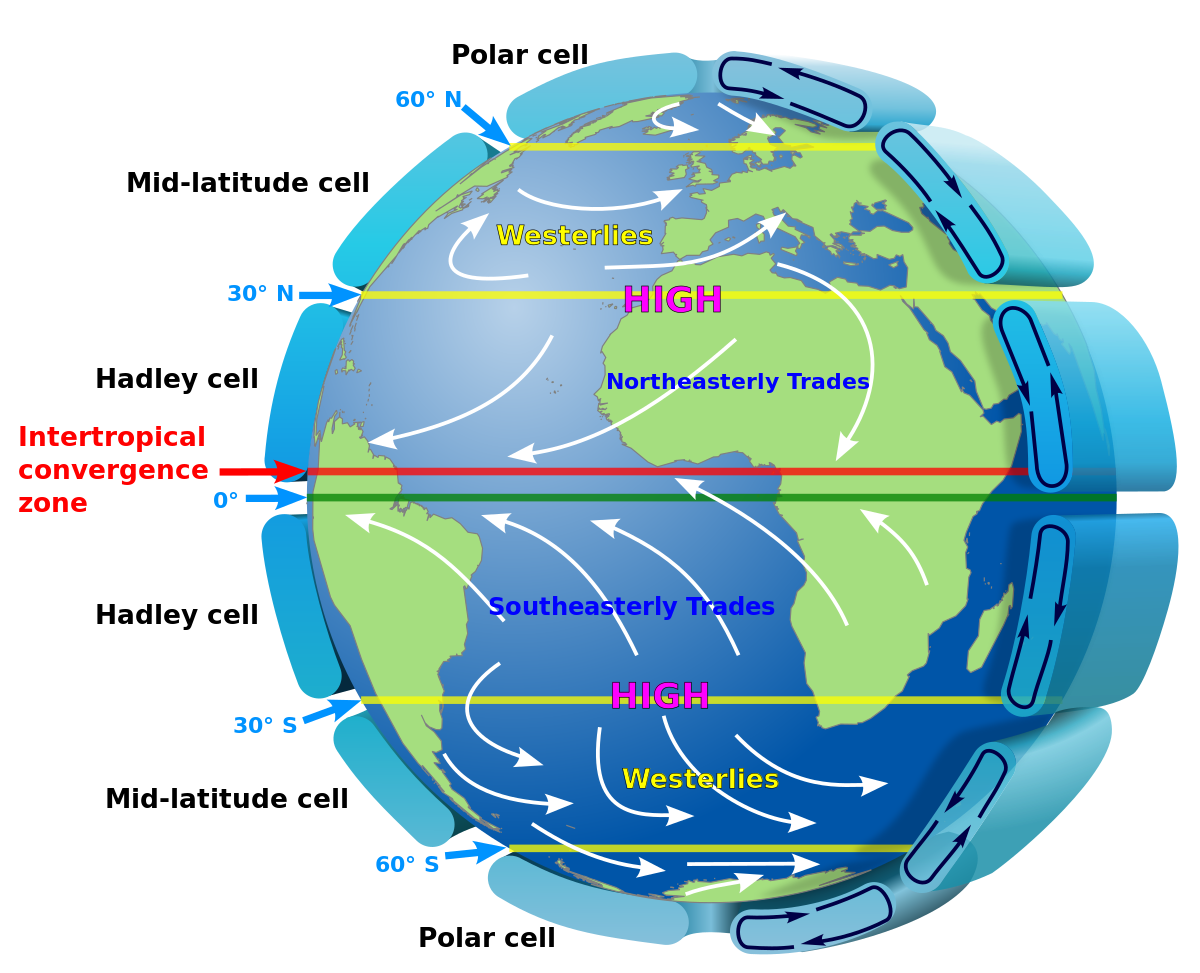
Atmospheric Circulation Wikipedia
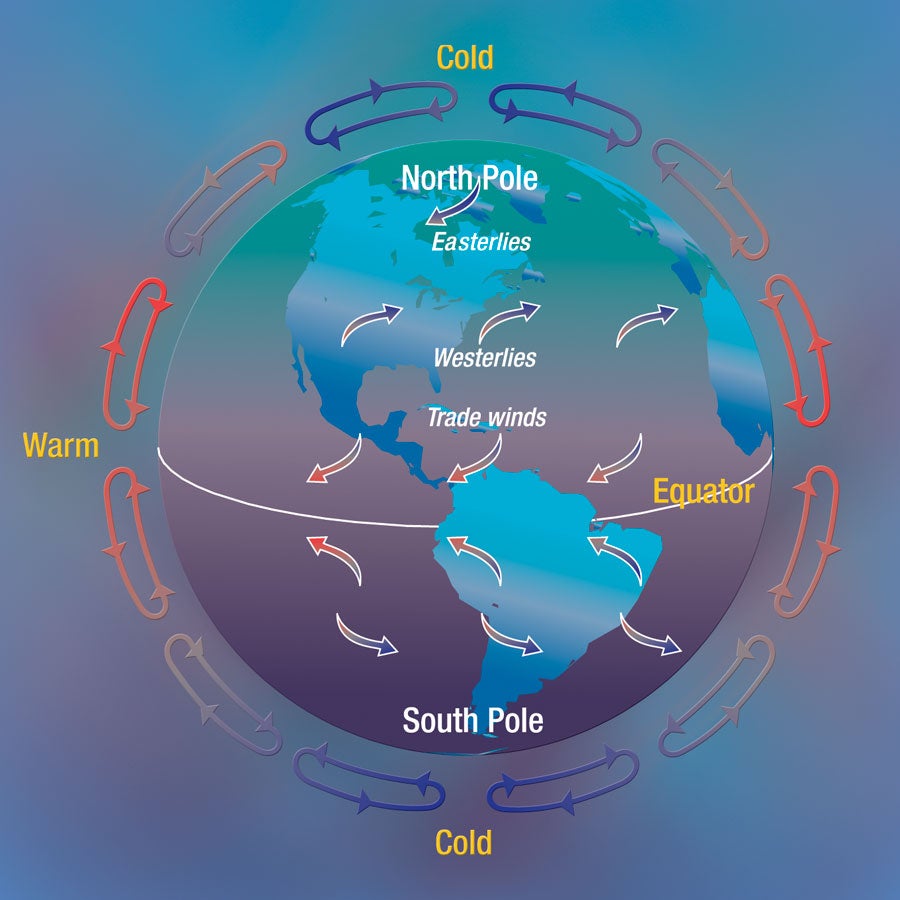
A Global Look At Moving Air Atmospheric Circulation Center For Science Education

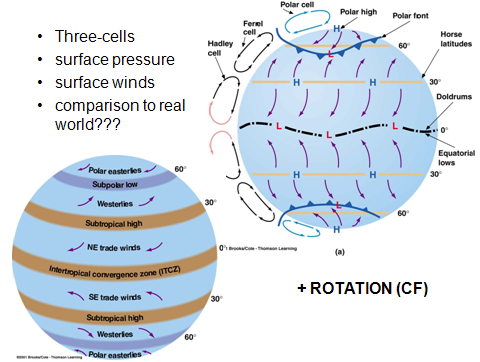
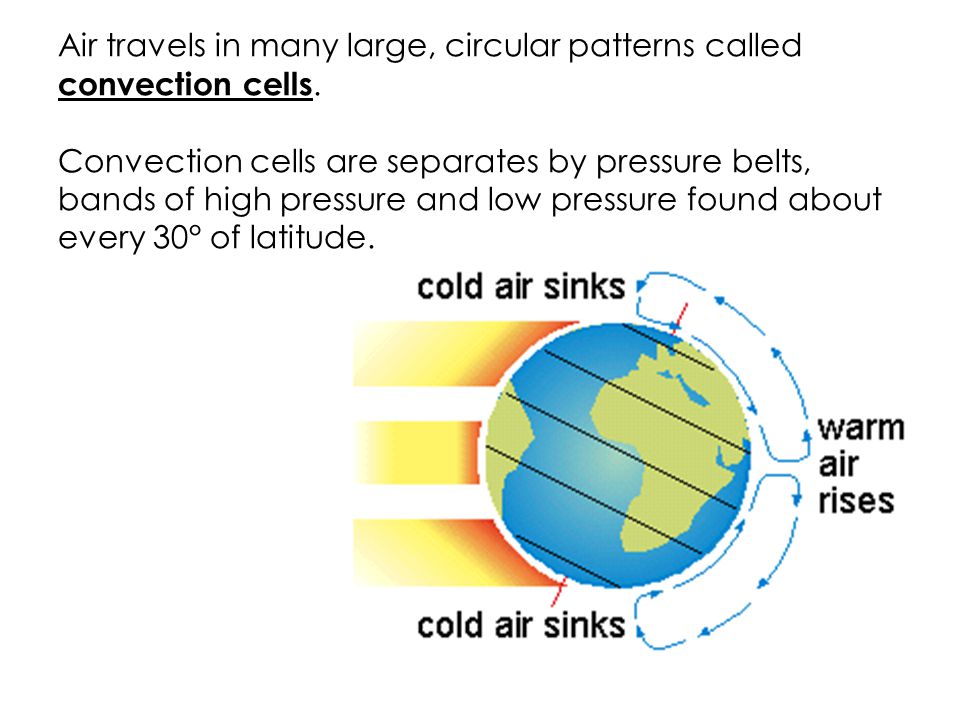
0 comments
Post a Comment